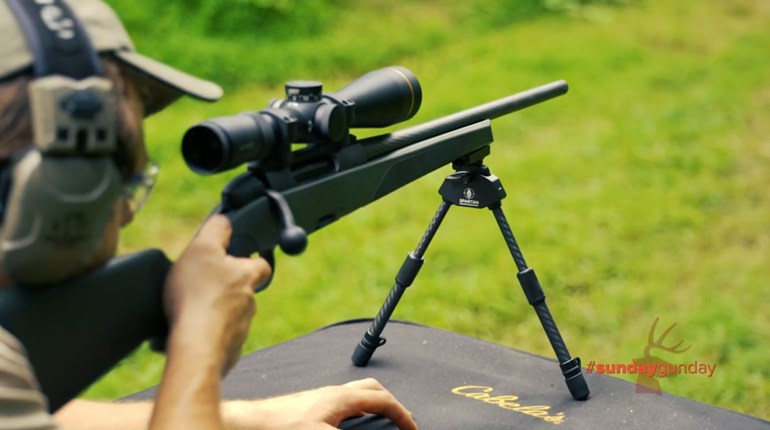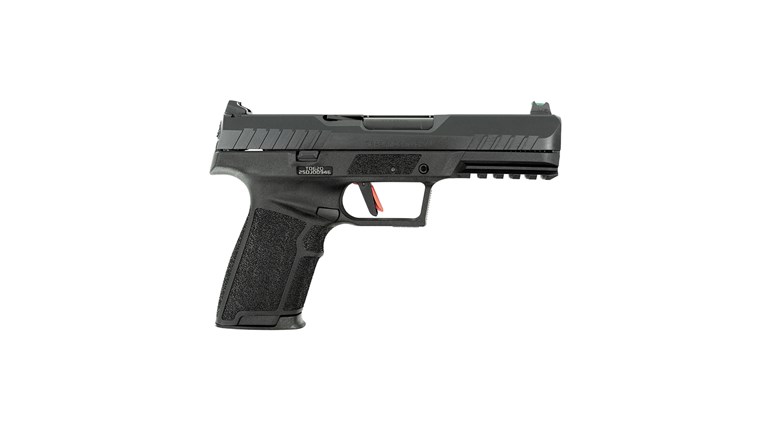
I’m not so old that I can say I remember a time where leather was the norm over kydex, but it wasn’t unusual then either. It does feel like a completely different era, though. Production in USPSA was the norm, the hotshots were in Limited, Single Stack was smaller but still hotly contested and, Revolver, while still a minority, was not uncommon to see. Optics were buy-one, get-one; when a shooter needed reading glasses, they retired to Open. Gosh, a lot has changed.
As I sit down to write this, the USPSA Western States Single Stack Championship has just concluded, along with the associated Revolver and now Production pre-matches. Of all the pistol matches that I’m fortunate enough to participate in throughout the season, I have to say that this one is my favorite. I’m a dyed-in-the-wool Single Stack guy, sure, but this match also has become quite unique. Oddly, a low-cap match is almost a juxtaposition when what used to be the norm is built upon the contemporary existence of our sport. In fact, a lot of folks in the Southwest only have low-cap gear to shoot this particular match once a year at Rio Salado.

I used to scoff at the elder statesmen of our sport when they would speak of revolver neutrality in stage design. Then as now, the match was the same for everyone and birds of a feather faced the same challenges on the score sheet. When the sport opened up from six shots per view to eight, stage design moved in a new direction as well. It’s more dynamic, which I would argue is for the better to appeal to an upcoming generation of shooters, but that same dynamic would also stunt the diversity of appeal to use different kinds of equipment at open enrollment matches. The sport has largely become a culture of high capacity.
Many contemporary stages in USPSA are designed to flow for and be challenging to shooters with larger capacity guns, if for no other reason than because the stage designers themselves are Open, Limited or Carry Optics shooters themselves, so that is the lens they see the world through. I’m not here to say that it is a bad thing, but it does leave a lot of nuance just below the surface of the sport to explore. Is this something we should keep and maintain in the sport, or is it ok to be washed away? There are certainly advocates for consolidating or eliminating some of these divisions from the sport, but is it in the best interest of the sport to do so—or is there something here worth saving?
What would the appeal even be of low-cap? Of course there is the obvious desire of some to shoot nostalgic guns or to use existing gear, but I see a bigger purpose. Growth and sustainability of USPSA is equal parts attracting new shooters and—perhaps more importantly—attracting them sufficiently to stay. I see a lot of times that a sophomore generation of shooters come into the sport, burn hot for a couple seasons, refine their game and then disappear. It’s almost as if the game becomes uninteresting to then as the initial struggle subsides. There is another group, however, that starts to branch out and try their hand in other divisions, keeping the game fresh.
The challenge is in the execution. Higher capacity divisions make the game very “mano a mano” in that mental and athletic executions decide the winner. Technical skills are diluted because there is rarely a problem a competitor can’t shoot their way out of, or stick an extra reload to have enough ammo to finish a stage. In lower capacity divisions, the guns need to be fed more often; that makes the strategy of ammo management much more influential in stage planning, the technical execution of reloads more crucial and physically keeping the ammo on, about and accessible on your belt. It’s not enough to be smoking fast on your reloads from mag pouch number one; you need to be pretty decent on number two, three and even four. So, too, are placing the shots more critical, because one or two make-up shots can totally derail an ammo management plan—and then there is the question of are there enough mags on the belt to get back on track?
It’s a different level of self-imposed challenge to our beloved game. It’s what a further tee box is in golf, a sub-gauge shotgun is to sporting clays or going what natural is to power lifting. It’s the same sport but on a different level, and I think that is what really appeals about low-cap competition in the 2025 landscape of USPSA. If your local match seems to be full of straightforward stages, maybe give them a try with some different gear and see what happens. You might be surprised.
We are also seeing an influx of self-defense shooters into the sport. The interest in an opportunity for practice and problem solving with everyday carry guns and gear has always been around, but it is seeing new interest with the adaptation of the ruleset to allow appendix holsters. An even greater catalyst is Hunter Constantine putting up his own cash bounty to shoot from concealment at major matches. While standard feature sets of a lot of concealed equipment lands competitors in Open or Limited Optics, these competitors potentially would be better served by lower capacity divisions for the types of challenges they are looking for, and it’s a more relevant place for them to engage with the match.
In addition to a personal love of some of the low-cap guns, all this leads to my excitement for optics being allowed into Limited 10. With a simple change, a stagnant USPSA division has new horizons. We have an entire generation of competitors who have never competed with iron sights and have no interest in doing so. While some will certainly try it—and I hope they do—many will consider iron sights a non-starter. Limited 10 (Optic) opens a new venue for optic-inclined shooters to try their hand at low-cap match challenges and test a different aspect of their skills. If you are looking for a new challenge, let’s see how hot you are without so many bullets.
As low-cap shifts from norm to unique, I hope to see more highlight matches like the Western States Championship, as it is pretty unique and could do well in various parts of the country. I also hope that the Limited 10 refresh will spark new interest in an old twist on our favorite USPSA game and inspire a fresh look at a lower capacity interpretation of match participation.
Article from the May/June 2025 issue of USPSA’s magazine.


































